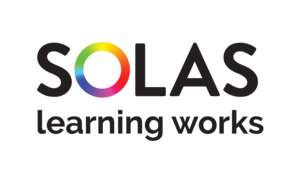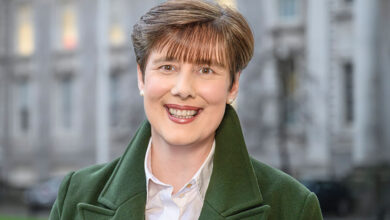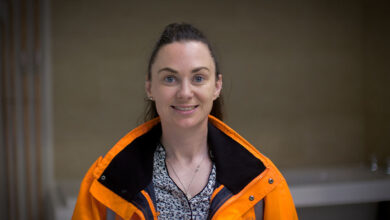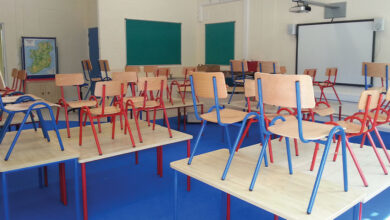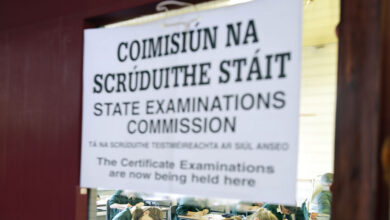The future of Further Education and Training
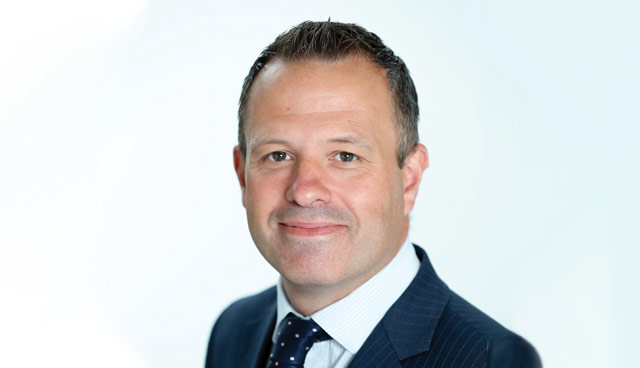
Andrew Brownlee, the newly appointed Chief Executive Officer of SOLAS, Ireland’s Further Education and Training (FET) authority, speaks with eolas about the FET college of the future, the end of the sector’s first five-year plan and why now is an exciting time for FET.
“The sector is relatively young. It was only created in 2013 with the creation of SOLAS and the 16 Education and Training Boards,” Brownlee says, detailing his view that we are currently at a juncture full of potential for FET. “The sector has been going through a development and organisation phase, where the priority was getting the organisations up and running, getting their structures right, matching roles and responsibilities to capabilities, getting the systems and processes in place.
“It’s only the last couple of years where a policy agenda has been developed, with an action plan on apprenticeships and traineeships and the agreement of national targets with the Minister of Education and Skills. In 2018, performance agreements were established between SOLAS and the Education and Training Boards. We’re at a place where we have a really strong foundation and there’s so much potential for real reform and performance improvement as we move ahead.”
Founded as part of the July 2011 Government approved re-structuring of the FET sector, SOLAS works with stakeholders and partners to deliver this reformed FET provision on an annual basis. This reform involves structural-level change, as well as changes affecting planning, prioritising, funding and the provision of FET programmes and services which are based on an identified need for a more coherent and effective system of provision. Strategic Performance Agreements between SOLAS and each of the ETBs set out “the context, strategic priorities and individual ETB contributions to the achievement of key national Further Education and Training (FET) sector targets over the period 2018-2020”.
“The strategic performance agreements were a major piece of reform over the last few years,” Brownlee says. “Effectively what they are, are mini three-year strategies for each ETB that sets out the unique characteristics of each region they serve, the further education infrastructure and facilities they have available and how they’re going to shape their future direction to respond to the evolving labour market needs of their region.”
“It sets out their contribution to each of the six core national FET system targets. Those are a nice summary of what we’re trying to do as a FET system: they’re about generating employment outcomes, making sure people progress along a pathway, within FET and onto Higher Education. They’re about making sure that people develop transversal skills that allow them to participate fully in society and in the economy and that they are recognised for developing those skills. It’s also about making sure that we have a strong focus on lifelong learning and that getting people to reengage in education and training throughout their careers and lifetimes. They’re about getting people to focus on the key critical skills areas that Ireland needs to prioritise in order to succeed in the coming years. They’re about making sure we develop new apprenticeship and trainee programmes that can get people interested in FET as a destination.”
Brownlee sees the work being put into the reform of FET as a stepping stone toward Ireland having a more coherent post-secondary education system, one that envelopes both FET and Higher Education. “One of the most important things we need to think about is looking at FET and Higher Education in a more cohesive way,” he says. “Start talking about a tertiary education sector; I know that’s something the Department of Education are very interested in. Over time, we need to look at the balance between HE and FET for the school leaver cohort.
“FET has potential to play a much stronger role for school leavers, whether they want to pursue an apprenticeship, undertake a traineeship or pursue a foundation course that is going to take them into HE without a four-year commitment. If we can develop FET in the way we want, to start looking at what the FET college of the future looks like, it can be somewhere the school leaver or lifelong learner wants to go to and engage with.”
Such reform and a concentrated vision has led to the broadening of the FET sector’s offering for prospective participants. “We have 52 apprenticeship programmes in operation, including a whole series of new exciting apprenticeships available in areas such as auctioneering, property services and technology, hospitality and cheffing,” Brownlee says. “We are in the midst of the generation apprenticeship campaign. There’s excitement and public traction, we’re getting young people interested in FET and apprenticeships for the first time.”
Brownlee says that creating a well-functioning FET sector over the last six years in order to enable that kind of offering has been no small task: “We’ve got a great foundation in place. You had a further education sector, run by county-based vocational educational services and then a national training service, run by FÁS. Trying to get those together, create new regional structures and change the culture of moving from command and control to shaping and influencing independent autonomous organisations has been a challenge, but we’re in a really good place.
“ETBs have a clear sense of where they need to go to meet the needs of their region. SOLAS has a clear sense of where it needs to invest strategically to get the profile and recognition it deserves. There’s been a lot of good things happening and what we need to do moving forward is focus on pathways and show people that FET can be a route into careers, HE and how it can be a resource you engage with regularly throughout your lifetime and career.”
Concluding, Brownlee looks to the future and the “three or four key areas” SOLAS are focusing on to develop the next FET five-year strategy. “One is moving away from that training centre/PLC college divide and getting people to identify with an integrated FET college of the future,” he says. “Making sure that there are clear learner pathways; FET in the past has been very complex, we have 26 different programmes. We need to simplify that landscape significantly and make it clear that if you go in to do a course, there’s a clear outcome and pathway to take you wherever you want to go. We also need a consistent support package for learners regardless of what part of FET you present to, so that you know that if you go into FET you’ll have a common base of financial support and access to the same level of guidance and literacy and numeracy support.”
“We need to look at how we start developing vocational options at second level and I think there’s a role for FET there as well. We must also ensure the opportunities are there on the employers’ side so we can ensure that there are large numbers of people going into apprenticeships, traineeships and PLC courses so that FET can take its rightful place as a serious option for young people and lifelong learners.”
T: + 353 (01) 533 2500
E: info@solas.ie
W: www.solas.ie
